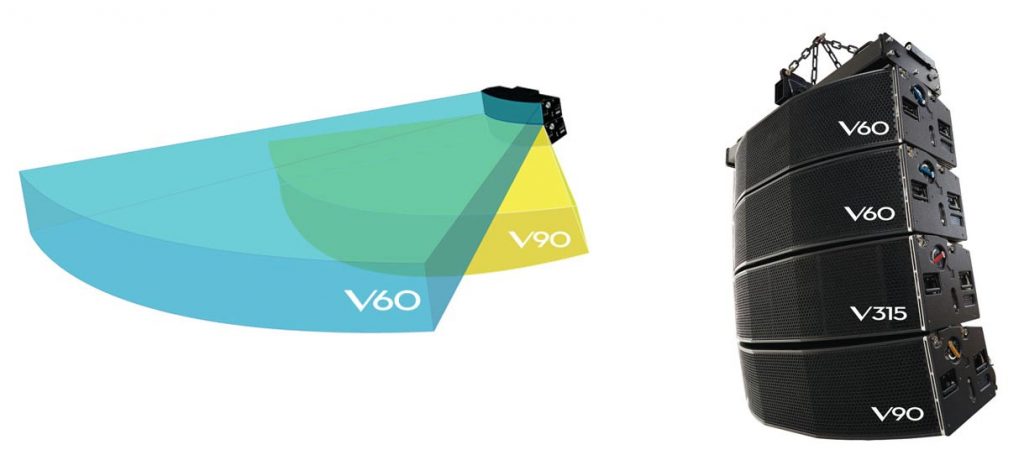
We are the UK’s Vero rental partner.
Vero is a complete system – featuring loudspeakers, amplification, rigging and software – that combines outstanding sonic performance and ease of use. Its arrayable format means it is designed for the ergonomic expectations of modern touring environments, yet its audio quality and efficiency is unprecedented. Vero is a new type of system that comes from a new approach to tour sound. See system >
Vero’s designers have achieved amazingly coherent summation of audio energy from finely angled adjacent enclosures for high intensity projection to the far field. Enclosures can also be arrayed at greater angles to extend vertical coverage for the near field. This enables accurate physical control of sound density from a Vero array. The natural geometry of the waveguides and their relationship with each other within the array results in a coherent addition of sound which we have named Geometric Energy Summation (GES).
(GES) enables sound density to be easily and accurately tailored whilst preserving a uniquely detailed sonic picture.

(GES) has opened a door to new thinking with regard to directivity and audio spectrum division. Typically a vertical array relies on the coupling of multiple boxes to mutually reinforce and give directivity control. Vero doesn’t. In the Vero system, a single box or group of boxes are able to perform independently of each other, which means that the entire audio spectrum doesn’t have to be present in the same enclosure. This allows us to dedicate enclosures to mid-bass and mid-high frequencies.
There is also a further division of the mid-high enclosures into a more focused and narrower dispersion V60 long throw enclosure for the top of the array and the wider dispersion V90 for the medium to nearfield. Therefore, there are three different types of Vero enclosure, V315 mid-bass and two directivities of mid-high, V60 and V90. These may all be deployed singly or in groups within an array, enabling precise tailoring of power and directivity in accord with a venue’s coverage and SPL requirements. This ensures the focus of the audio is solely on the audience, which in turn leads to a reduction in unwanted room excitement and a consequent overall improvement in audience experience.

The system
Rollover each product to find out more
Vero in action with Audio Plus